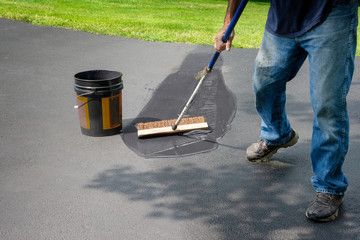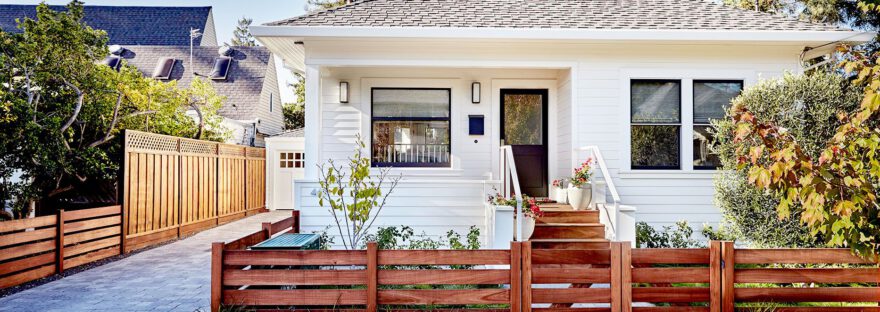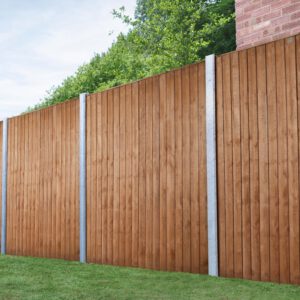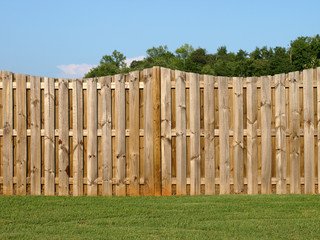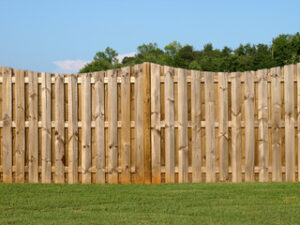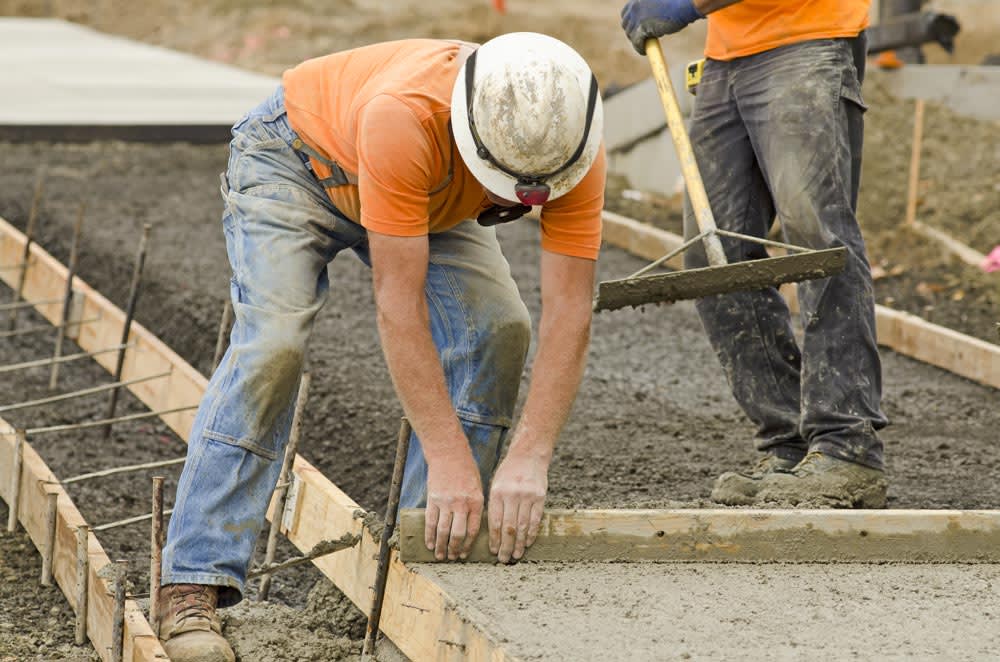A new asphalt driveway or parking lot can be a significant investment. So, to help you save money on routine maintenance and repair costs, it’s essential to carry out regular seal coating.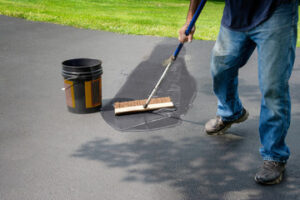
Generally, the appearance of fine cracks indicates that it’s time to apply a fresh coat. Learn how to do Rochester NY Sealcoating yourself to maintain your paved surface and keep it looking brand-new!
The first step in the sealcoating process is assessing and cleaning the pavement to be coated. This is done to ensure that all cracks, potholes and other asphalt surface defects are filled or patched prior to sealing. The next step is clearing the pavement of all debris, including loose pebbles, leaves and trash. It is also a good time to wash away any fertilizers, oil or chalk residues on the asphalt. The pavement should be completely dry prior to applying the seal coat. Sprinklers should be turned off for a full day before and a full day after the application, as the sealcoat will not bond properly with wet pavement.
The next step is picking the right days for the work. A sealcoat can only be applied when it is dry, so the weather should be clear and sunny. It is also important that there are no vehicles parked on the pavement, as the sealcoat will not be able to adhere correctly to wet surfaces. It is also a good idea to remove any items on the property that are close to the pavement, such as garbage cans and bicycles. If there are any deliveries scheduled for the driveway, rescheduling them for another time is a good idea.
In addition to filling in surface holes and cracks, a sealcoat also acts as a protective layer against the elements that can cause the deterioration of asphalt. The ingredients in a typical sealcoat include a liquid asphalt binder, which is made from the distillation of certain crude oils, as well as rock and stone aggregate, coal tar and/or sand. The binder helps to bind the aggregate together, while protecting it from damaging UV rays, heavy rains and chemicals. When it is regularly applied every two to three years, sealcoating can prolong the lifespan of your asphalt surface and significantly reduce repair costs.
Squeegee or Spray Application
When someone inquires about sealcoating their property, they usually ask what type of application process will be used. They may be curious whether a spray or squeegee method will be utilized for the project, and if so, which one will be better for their needs. It is important to remember that any reputable sealcoating company will employ both methods for their projects, and will use one or the other as necessary based on the pavement condition and desired finish.
The squeegee method is used to apply the first coat of sealant and to ensure that it has adhered properly to the surface of your blacktop. The crew will either use hand tools or a machine with a squeegee attached to apply the liquid over the paved area. The squeegee technique creates a superior bond and is able to reach deeper into cracks and crevices that may not be easily reached by a sprayer.
For the second and final coat, many companies use the spray application method. In this case, the crew will show up with a truck or trailer that contains a large tank of asphalt sealer. They will then attach a hose to the tank and operate the pump at high pressure, which will allow the sealer to be sprayed onto the paved area. The spraying method is fast, making it easy to achieve an even result.
Typically, spray applications will also require some form of masking to prevent overspray on curbs, sidewalks, or structures such as buildings. This additional step can be time consuming, and can potentially add to the overall cost of the project.
Both methods have their advantages and drawbacks. In the hands of a professional, both will produce quality results. It is important to understand the nuances of each method, and to align your goals with that unique characteristic.
In the end, it is important to note that both sealcoating methods will yield long-term protection for your blacktop pavement. Using both methods in tandem will provide the best results, and help to extend the lifespan of your pavement.
Stage the Barrel
In this stage, a cooper prepares the barrel for its final shape and the wood’s silky sheen is acquired. It is at this point that the cooper puts his signature on the chime of the barrel, like a master-craftsman proud of his work.
Before the cooper puts his signature on the chime, the barrel is subject to a rigorous inspection in order to ensure its perfect compliance with specifications. Once the barrel has passed this phase, it can be delivered.
The application of a seal coat helps protect asphalt and improves the appearance of roads. It can also help prevent the oxidation of the road’s surface and fill in small cracks and joints. However, it can take up to 24 hours for a road to dry after applying the seal coat. This can be a major inconvenience, especially in areas where it rains often.
A properly-sealed road lasts much longer than an un-sealed one. This is because the seal coat makes it more difficult for water to penetrate and freeze the road. This reduces the risk of ice-related accidents and injuries.
Sealcoating can be expensive, but it’s well worth the investment. A properly-sealed road can last up to two times longer than an un-sealed road, reducing maintenance costs and saving the city money in the long run.
Some studies suggest that refined coal tar sealants may contribute to elevated polycyclic aromatic hydrocarbon levels in streams and creek beds, which can be harmful to fish and other wildlife.
While some people may be concerned about the health risks associated with coal tar, there are many safer options for sealcoat materials. Instead of using coal tar, more and more cities are turning to non-petroleum sealants. Non-petroleum sealants are made from ingredients that don’t produce as many toxic fumes and can even be recycled at the end of their useful life.
Apply the Coat
A paved surface needs to be maintained in order for it to last longer and look nicer. Proper maintenance includes periodic sealcoating. Whether you’re a commercial property owner with acres of parking lots to maintain or a residential homeowner who wants to make your asphalt driveway look like new, hiring a professional sealcoat contractor is your best option.
The first step in the process is to completely clean the paved surface and remove oil stains. It’s also important to identify and repair any cracks, potholes or other damaged areas of the paved surface before you apply a sealcoat. This is usually done with an asphalt patch kit, sand or other material, and then filled in.
You should always follow the manufacturer’s recommendation on mixing the concentrate with water, sand and quite frequently additives to create the right mix design for your pavement condition. The sand that you add should be a grade (% retained and % passing) that will produce the desired traction and textured appearance to the finished product. Too coarse sand will produce premature wear and too fine a sand will not anchor properly into the cured sealcoating film.
A good way to check your wet film thickness is with a simple film thickness gauge, available at most paint stores. Select a 10′ x 10′ area of the pavement and spray a small amount of sealcoat onto it, then use the gauge to read the wet film thickness. This is important because it’s an indication of how thick the coat will be when it dries and will affect its longevity.
During the application process you will be exposed to the sealant vapors which may cause burning of the skin. It’s recommended to wear long sleeved clothing, impervious boots and gloves and to read the safety data sheet supplied by the sealer manufacturer. On hot, humid days these vapors may not dissipate quickly and can become irritating.
The final step is to allow the sealcoating to dry and cure. This typically takes 24 hours or more, depending on the weather conditions. During this time it is important to keep all vehicles off of the paved surface, especially those in traffic lanes or at entrances and exits. If this is not done correctly, the tires can “track” the excess sealcoat and leave behind an undesirable, unsightly line.

